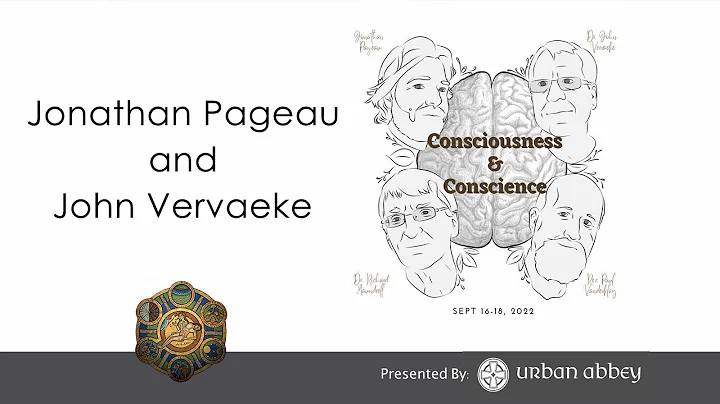John W Pyhtila
age ~50
from Wayland, MA
- Also known as:
-
- John Wesley Pyhtila
- John W Phytila
- John W Pyntila
- John W Puhtila
- Brook Pyhtila
- John Mykytka
- Phone and address:
-
7 Bridle Path, Wayland, MA 01778
(508)6555842
John Pyhtila Phones & Addresses
- 7 Bridle Path, Wayland, MA 01778 • (508)6555842
- 1400 Knollwood Ter, Decatur, GA 30033 • (404)2289856
- 822 Saratoga Dr, Durham, NC 27704 • (919)4775741
- 910 Constitution Dr, Durham, NC 27705
- Sunnyvale, CA
- Mountain View, CA
- Palatine, IL
- Attleboro, MA
- Blacksburg, VA
Us Patents
-
Systems And Methods For Endoscopic Angle-Resolved Low Coherence Interferometry
view source -
US Patent:7903254, Mar 8, 2011
-
Filed:Aug 10, 2009
-
Appl. No.:12/538309
-
Inventors:Adam Wax - Chapel Hill NC, US
John W. Pyhtila - Durham NC, US -
Assignee:Duke University - Durham NC
-
International Classification:G01B 9/02
G01J 3/45
G01N 21/00 -
US Classification:356456
-
Abstract:Fourier domain a/LCI (faLCI) system and method which enables in vivo data acquisition at rapid rates using a single scan. Angle-resolved and depth-resolved spectra information is obtained with one scan. The reference arm can remain fixed with respect to the sample due to only one scan required. A reference signal and a reflected sample signal are cross-correlated and dispersed at a multitude of reflected angles off of the sample, thereby representing reflections from a multitude of points on the sample at the same time in parallel. Information about all depths of the sample at each of the multitude of different points on the sample can be obtained with one scan on the order of approximately 40 milliseconds. From the spatial, cross-correlated reference signal, structural (size) information can also be obtained using techniques that allow size information of scatterers to be obtained from angle-resolved data.
-
Systems And Methods For Endoscopic Angle-Resolved Low Coherence Interferometry
view source -
US Patent:8537366, Sep 17, 2013
-
Filed:Mar 8, 2011
-
Appl. No.:13/042672
-
Inventors:Adam Wax - Chapel Hill NC, US
John W. Pyhtila - Durham NC, US -
Assignee:Duke University - Durham NC
-
International Classification:G01B 9/02
G01J 3/45 -
US Classification:356456
-
Abstract:Fourier domain a/LCI (faLCI) system and method which enables in vivo data acquisition at rapid rates using a single scan. Angle-resolved and depth-resolved spectra information is obtained with one scan. The reference arm can remain fixed with respect to the sample due to only one scan required. A reference signal and a reflected sample signal are cross-correlated and dispersed at a multitude of reflected angles off of the sample, thereby representing reflections from a multitude of points on the sample at the same time in parallel. Information about all depths of the sample at each of the multitude of different points on the sample can be obtained with one scan on the order of approximately 40 milliseconds. From the spatial, cross-correlated reference signal, structural (size) information can also be obtained using techniques that allow size information of scatterers to be obtained from angle-resolved data.
-
Systems And Methods For Endoscopic Angle-Resolved Low Coherence Interferometry
view source -
US Patent:20070133002, Jun 14, 2007
-
Filed:Oct 11, 2006
-
Appl. No.:11/548468
-
Inventors:Adam Wax - Chapel Hill NC, US
John Pyhtila - Durham NC, US -
Assignee:DUKE UNIVERSITY - Durham NC
-
International Classification:G01B 9/02
G01B 11/02
G01J 3/45 -
US Classification:356456000, 356479000, 356512000
-
Abstract:Fourier domain a/LCI (faLCI) system and method which enables in vivo data acquisition at rapid rates using a single scan. Angle-resolved and depth-resolved spectra information is obtained with one scan. The reference arm can remain fixed with respect to the sample due to only one scan required. A reference signal and a reflected sample signal are cross-correlated and dispersed at a multitude of reflected angles off of the sample, thereby representing reflections from a multitude of points on the sample at the same time in parallel. Information about all depths of the sample at each of the multitude of different points on the sample can be obtained with one scan on the order of approximately 40 milliseconds. From the spatial, cross-correlated reference signal, structural (size) information can also be obtained using techniques that allow size information of scatterers to be obtained from angle-resolved data.
-
Systems And Methods For Endoscopic Angle-Resolved Low Coherence Interferometry
view source -
US Patent:20120281224, Nov 8, 2012
-
Filed:Jul 17, 2012
-
Appl. No.:13/551348
-
Inventors:Adam Wax - Chapel Hill NC, US
John W. Pyhtila - Durham NC, US -
Assignee:DUKE UNIVERSITY - Durham NC
-
International Classification:G01J 3/45
G01B 11/22
G01B 9/02 -
US Classification:356456, 356450, 356498
-
Abstract:Fourier domain a/LCI (faLCI) system and method which enables in vivo data acquisition at rapid rates using a single scan. Angle-resolved and depth resolved spectra information is obtained with one scan. The reference arm can remain fixed with respect to the sample due to only one scan required. A reference signal and a reflected sample signal are cross-correlated and dispersed at a multitude of reflected angles off of the sample, thereby representing reflections from a multitude of points on the sample at the same time in parallel. Information about all depths of the sample at each of the multitude of different points on the sample can be obtained with one scan on the order of approximately 40 milliseconds. From the spatial, cross-correlated reference signal, structural (size) information can also be obtained using techniques that allow size information of scatterers to be obtained from angle-resolved data.
-
Systems And Methods For Endoscopic Angle-Resolved Low Coherence Interferometry
view source -
US Patent:20130265582, Oct 10, 2013
-
Filed:Apr 23, 2013
-
Appl. No.:13/868215
-
Inventors:John W. Pyhtila - Durham NC, US
-
Assignee:Duke University - Durham NC
-
International Classification:G01J 3/45
-
US Classification:356456
-
Abstract:Fourier domain a/LCI (faLCI) system and method which enables in vivo data acquisition at rapid rates using a single scan. Angle-resolved and depth resolved spectra information is obtained with one scan. The reference arm can remain fixed with respect to the sample due to only one scan required. A reference signal and a reflected sample signal are cross-correlated and dispersed at a multitude of reflected angles off of the sample, thereby representing reflections from a multitude of points on the sample at the same time in parallel. Information about all depths of the sample at each of the multitude of different points on the sample can be obtained with one scan on the order of approximately 40 milliseconds. From the spatial, cross-correlated reference signal, structural (size) information can also be obtained using techniques that allow size information of scatterers to be obtained from angle-resolved data.
-
Systems And Methods For Endoscopic Angle-Resolved Low Coherence Interferometry
view source -
US Patent:20180008147, Jan 11, 2018
-
Filed:Jun 27, 2017
-
Appl. No.:15/634456
-
Inventors:- Durham NC, US
John W. Pyhtila - Durham NC, US -
International Classification:A61B 5/00
G01J 3/45
G01N 21/47
G01N 21/31
G01B 9/02
A61B 1/00 -
Abstract:A method of assessing tissue health comprises the steps of obtaining depth-resolved spectra of a selected area of in vivo tissue, and assessing the health of the selected area based on the depth-resolved structural information of the scatterers. Obtaining depth-resolved spectra of the selected area comprises directing a sample beam towards the selected area at an angle, and receiving an angle-resolved scattered sample beam. The angle-resolved scattered sample beam is cross-correlated with the reference beam to produce an angle-resolved cross-correlated signal about the selected area, which is spectrally dispersed to yield an angle-resolved, spectrally-resolved cross-correlation profile having depth-resolved information about the selected area. The angle-resolved, spectrally-resolved cross-correlation profile is processed to obtain depth-resolved information about scatterers in the selected area.
-
Systems And Methods For Endoscopic Angle-Resolved Low Coherence Interferometry
view source -
US Patent:20150045677, Feb 12, 2015
-
Filed:Sep 23, 2014
-
Appl. No.:14/494080
-
Inventors:- Durham NC, US
John W. Pyhtila - Durham NC, US -
International Classification:A61B 5/00
A61B 1/00
G01B 9/02 -
US Classification:600477
-
Abstract:A method of assessing tissue health comprises the steps of obtaining depth-resolved spectra of a selected area of in vivo tissue, and assessing the health of the selected area based on the depth-resolved structural information of the scatterers. Obtaining depth-resolved spectra of the selected area comprises directing a sample beam towards the selected area at an angle, and receiving an angle-resolved scattered sample beam. The angle-resolved scattered sample beam is cross-correlated with the reference beam to produce an angle-resolved cross-correlated signal about the selected area, which is spectrally dispersed to yield an angle-resolved, spectrally-resolved cross-correlation profile having depth-resolved information about the selected area. The angle-resolved, spectrally-resolved cross-correlation profile is processed to obtain depth-resolved information about scatterers in the selected area.
Resumes

Associate At Mckinsey & Company
view sourceLocation:
Greater Atlanta Area
Industry:
Logistics and Supply Chain
Experience:
McKinsey & Company (Partnership; 5001-10,000 employees; McK; Logistics and Supply Chain industry): Associate, (-)

John Pyhtila
view sourceYoutube

John Pyhtila
view sourceFriends:
Emily McClintock, Yaocheng Liu, Chris Gilchrist, Kari Kechter, Blair Relf
Get Report for John W Pyhtila from Wayland, MA, age ~50





